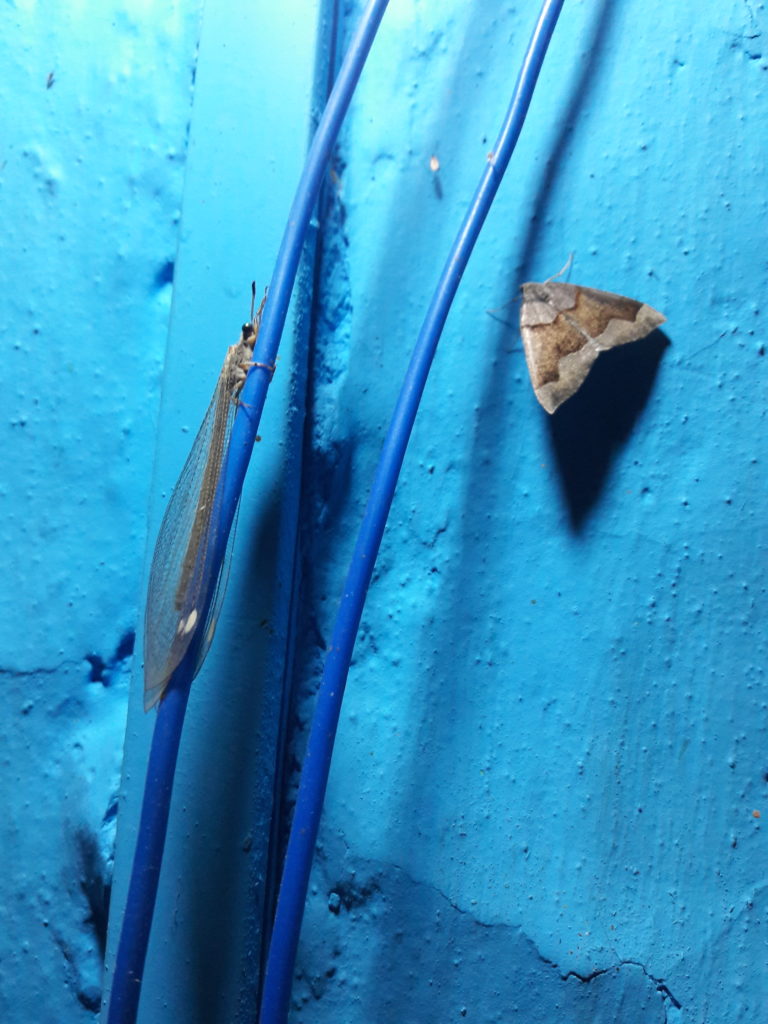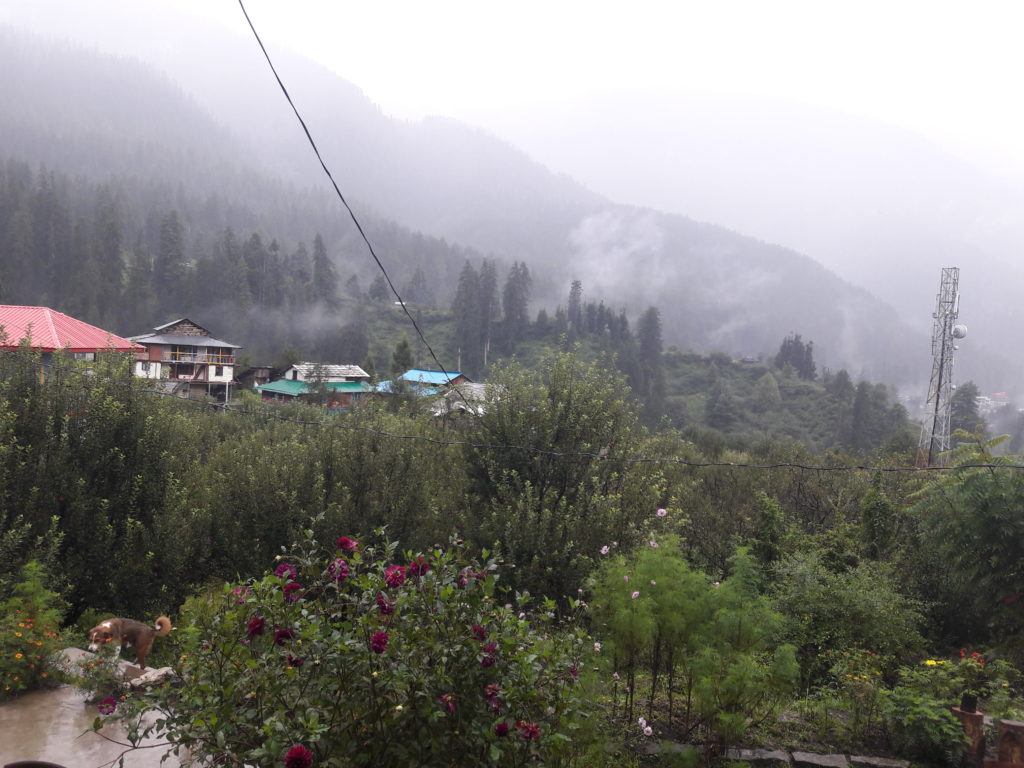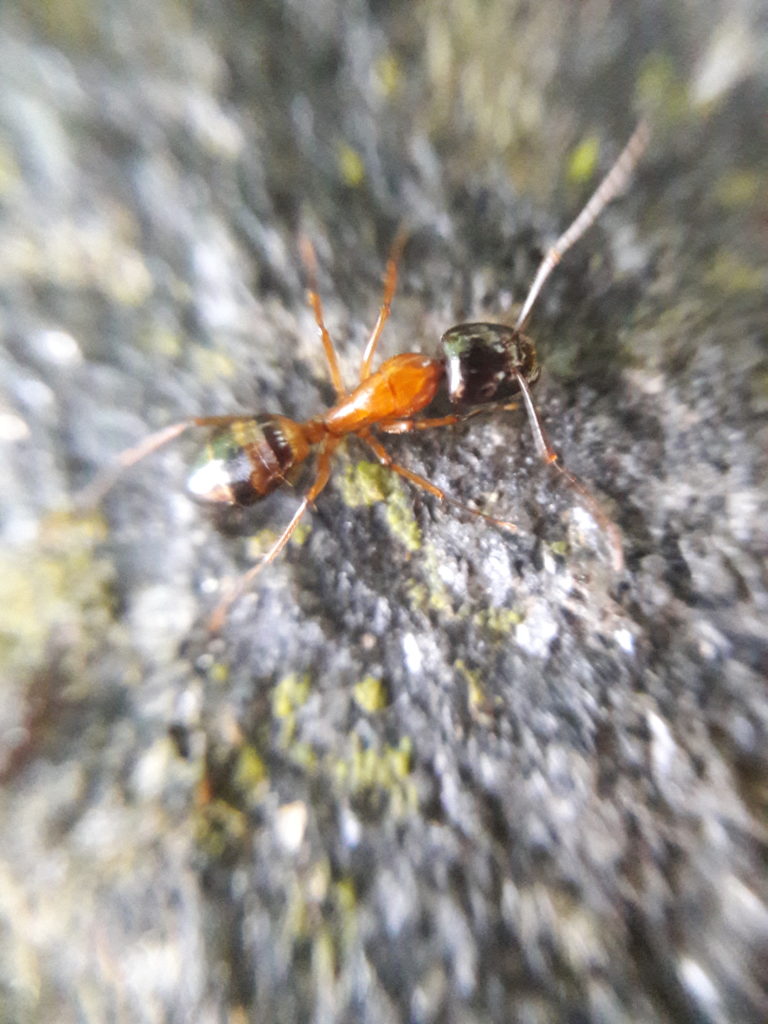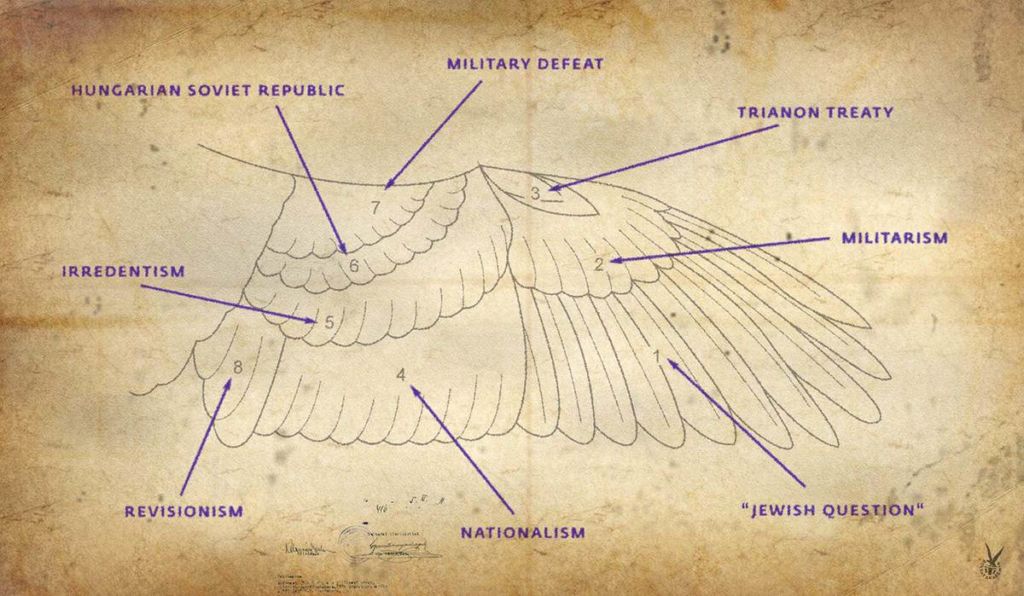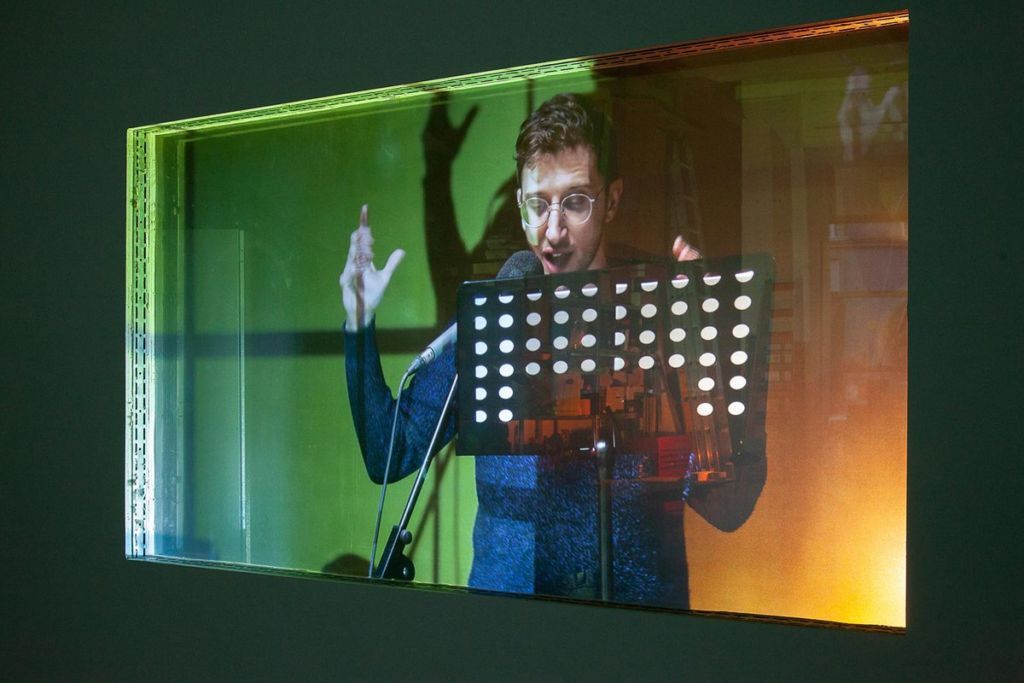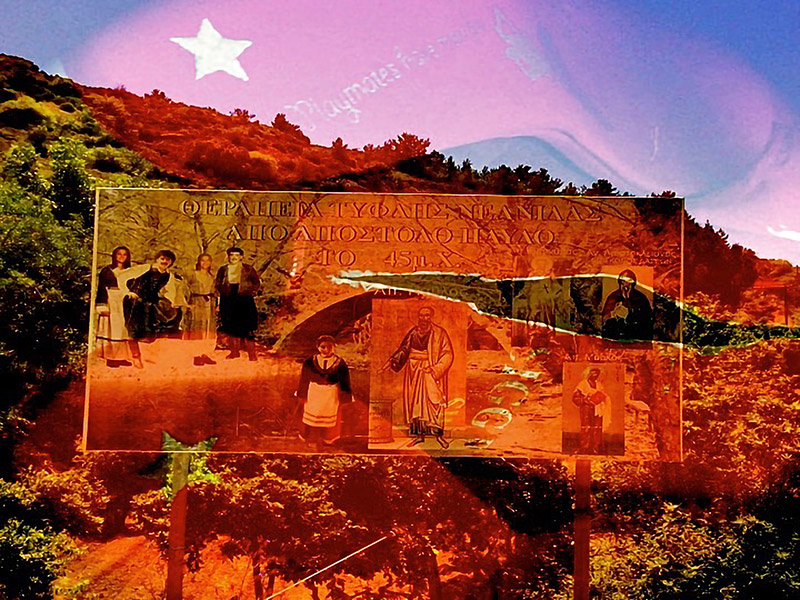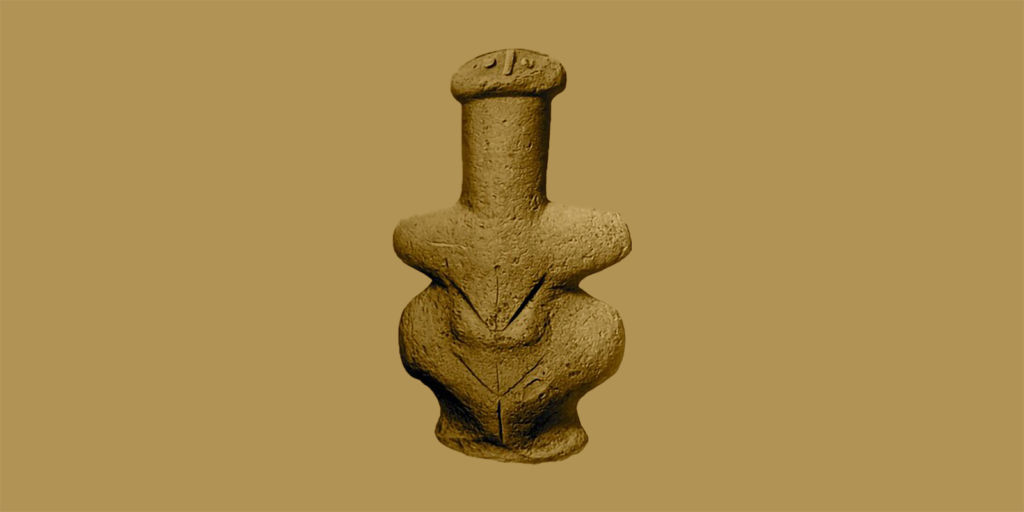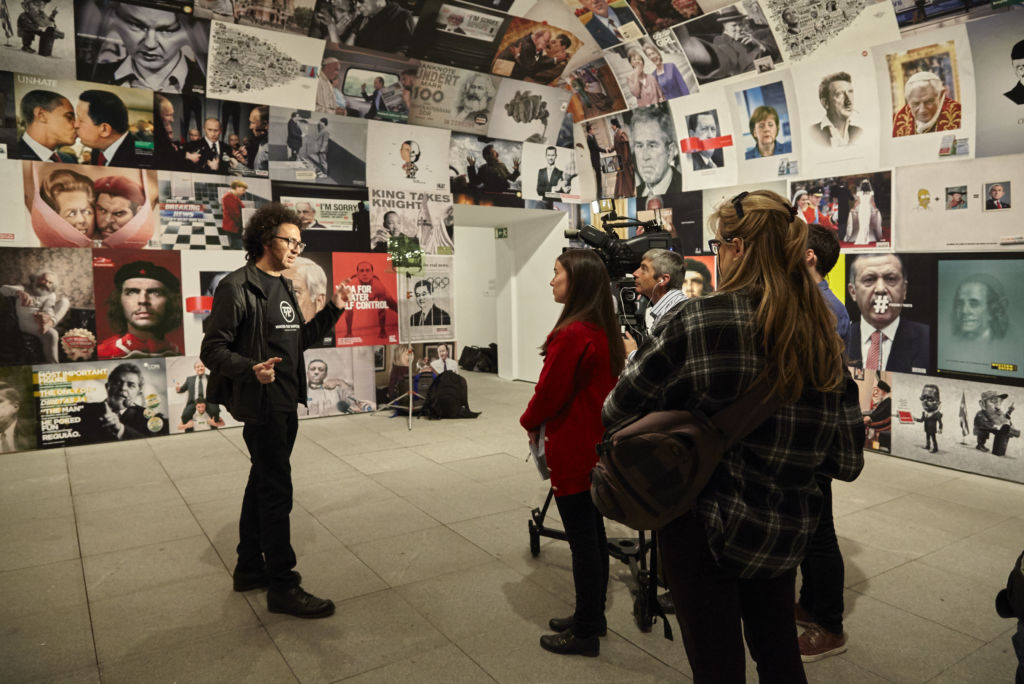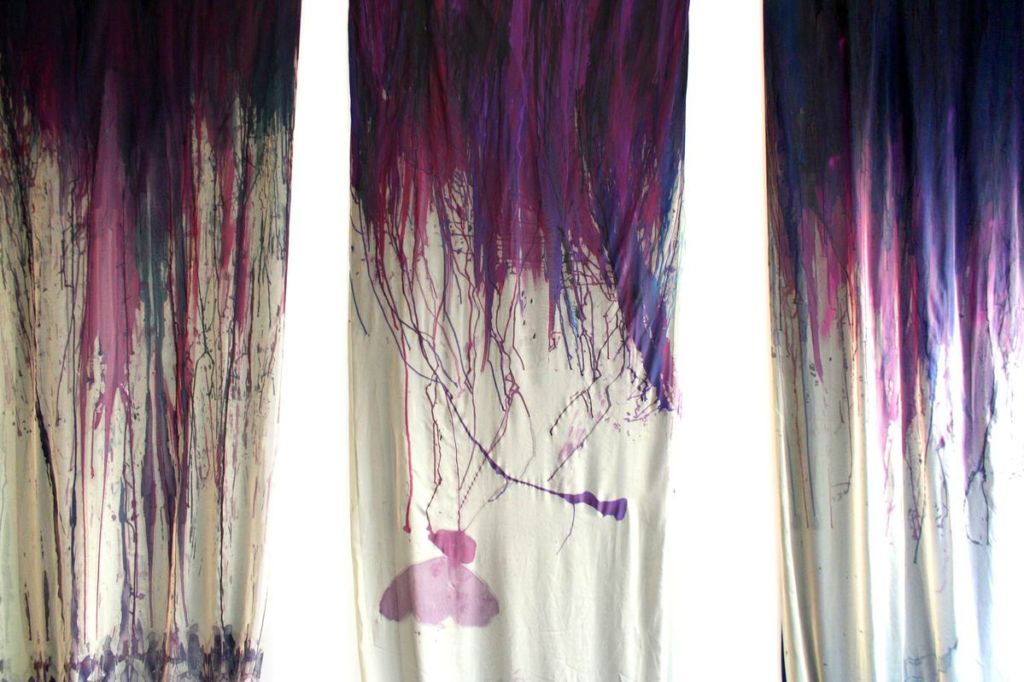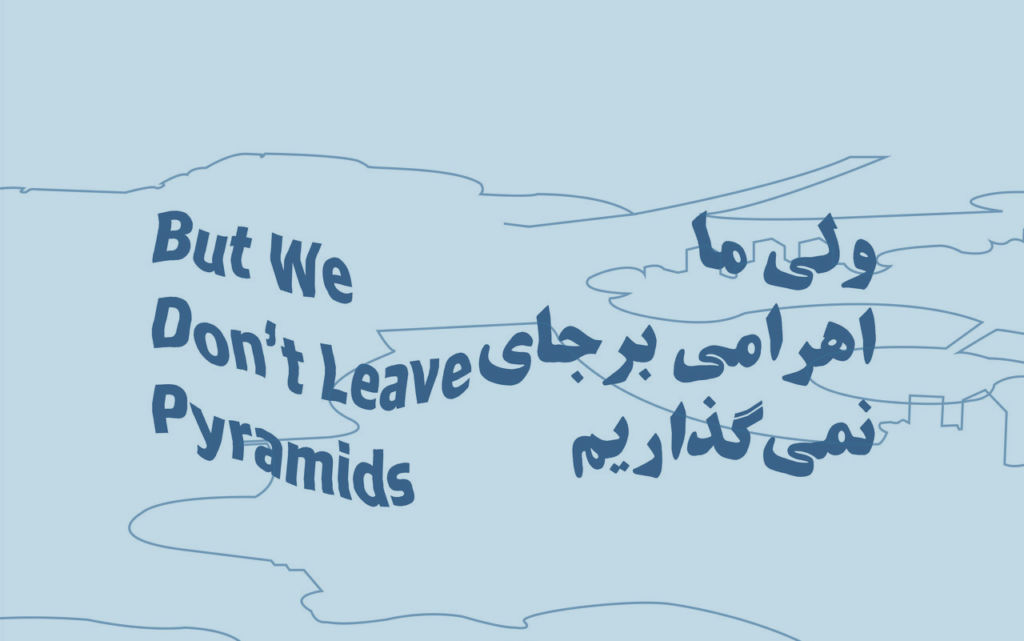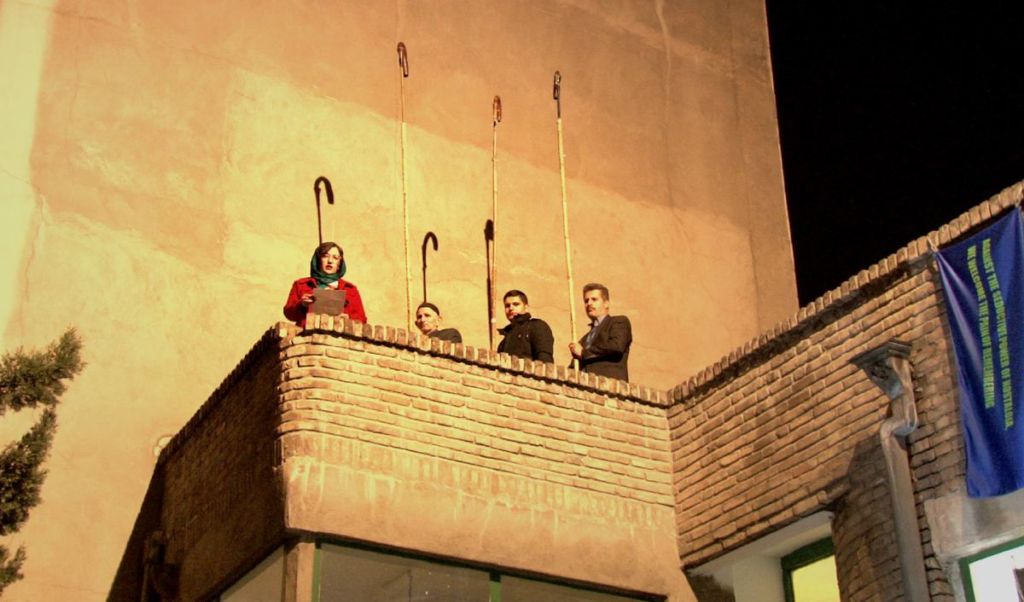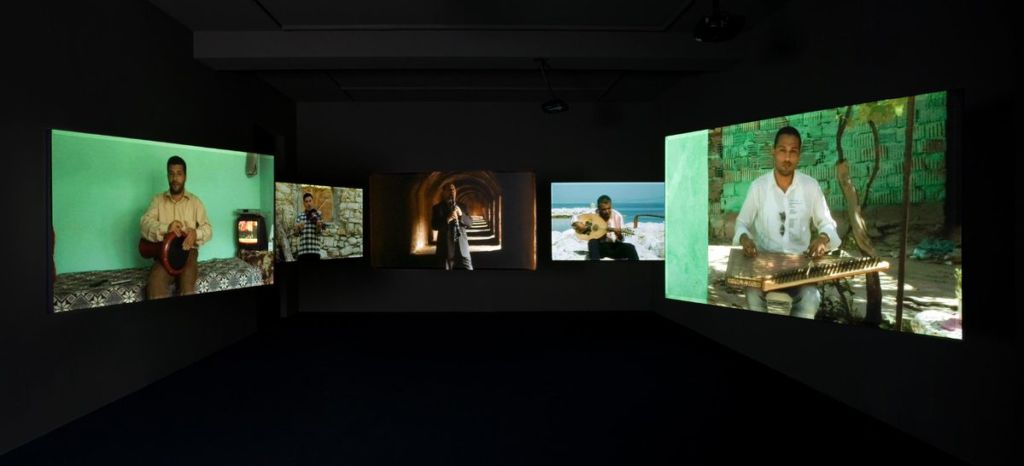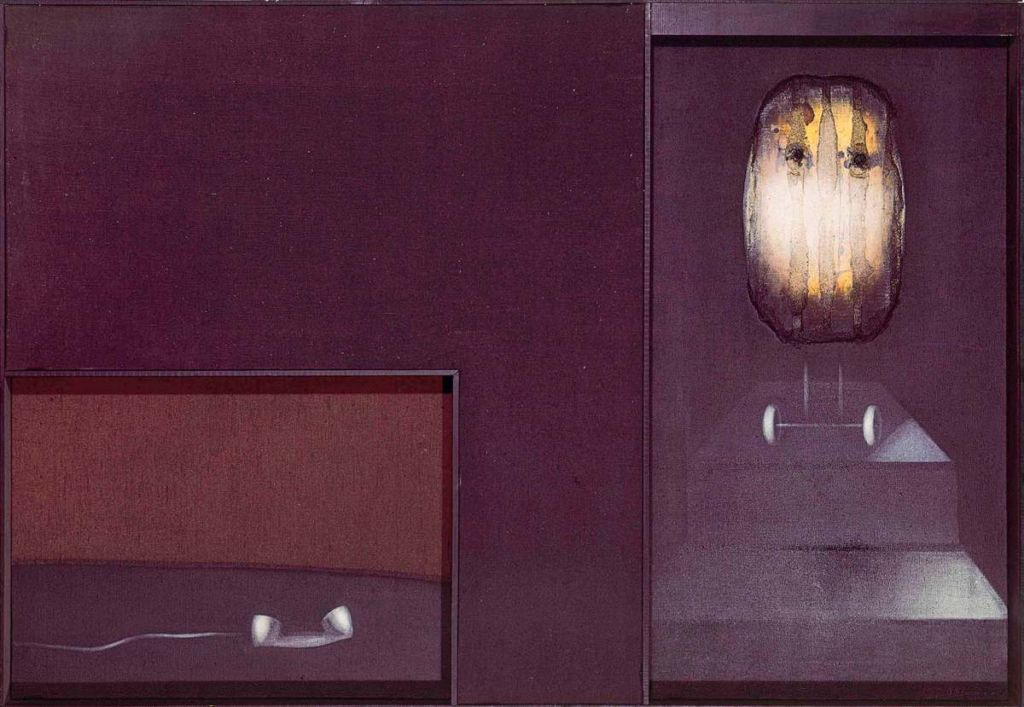In late 2018, Alexis Cicciù arrived at KYTA, in northern India, invited there for an artistic residency. At 2 600 meters in altitude, in the middle of monsoon season, he immersed himself little by little in a new world dominated by insects –one of the artist’s passions—and charas, the local cannabis that sets the pace for the community’s rituals and daily life. A rite of passage told directly from the field.
I left for a five-week stay in India, from September 6 to October 17, 2018, in the state of Himachal Pradesh, at the foot of the Himalaya. The trip was part of an artistic residency called KYTA that is artistically managed by Shazeb Arif Shaikh and logistically and financially managed by Hashim Qayoom. I was co-opted by Éric Mangion, director of the Villa Arson art center in Nice, and Sonia Pastor, public relations director for the artmonte-carlo expo.
Knowing how I’d been wanting to get away from Menton, the city where I live, they thought this residency was the perfect thing to do me some good. Sonia Pastor called Shazeb, and on July 25 at 11am, she contacted me to say I was invited to a residency located in Kalga, in the Parvati valley. Sonia added that this region of the world is very well known for its cannabis resin called charas, prepared from fresh flowers. That’s the first thing she told me. It was all rather unexpected, since India was not really a destination that I had in mind. She asked if I would be okay health-wise, and I answered yes, getting a bit ahead of myself since, at the time, I had an open varicose ulcer on my ankle and was suffering from sleep apnea. I was a bit anxious about it. The next day, she called back and suggested I work on something related to textiles with the village women. She was quite fond of a piece I had made in 2017, an embroidered flag with beads and sequins that she saw in Marseille. Two days later, I had a realization: hemp is for smoking, but it is also for weaving. Considering my unfamiliarity with the country and even more with that region, I told myself that the main goal of my residency goal would be to work with textile. But having several strings to my bow, I could also envision doing something else entirely once there. Sonia reminded me that I also have a passion for entomology. If I wasn’t able to do what I wanted with hemp, I could always work with insects. I had once planned a biological inventory project for Villa Arson that never came to fruition.
New Delhi
In New Delhi, at Radha’s place, a friend of Shazeb’s, feeling tired because of my health issues, I was anxious. The taxi from the airport had been rude; I think he even cheated me. I found the city very interesting, dusty but also green, with trees everywhere. All of the insects and animals I saw were new, the city was an Eldorado. I could even identify some of them as I observed the scenery from the cab window. I couldn’t believe my eyes when I saw huge Cataglyphis ants scurrying across the pavement. They might make other people panic, but personally, I adore them. At Radha’s some wasps had made a nest in the bamboo chimes. Although the trip was starting well, I only stayed a few hours in New Delhi. I hate tourism, and since I live in a tourist city, I am surrounded by it six months out of the year. I have a real aversion to tourists. I don’t like their lack of awareness about the people around them. I decided not to stay in the city any longer than necessary. There were no guided tours planned as part of my residency, simply the expectation that I would make something out of this encounter with a new country. I had absolutely no desire to be a tourist myself, although the Parvati valley is a place for tourism. I had been warned about the young Israelis who, after finishing the dirty job of their military service, come there to rest and smoke charas for a year on their government’s tab. Leaving New Delhi for Kalga, I traveled for fifteen hours by bus, mainly at night. But in the morning, I caught a glimpse of the landscape, the monkeys and pal trees cropping up along the cliffs.
Arrival in Kalga
Once in Kalga, I expected to discover a completely new entomological fauna, but I was amazed by the similarity between the insects there and those we have in Europe. Near the guest house I found a Lasius emarginatus, the first species of ant that I ever raised myself, ten years ago. There are differences of course, but not that many. Sonia thought it would be very different but in the end, I was not at all out of my element. What troubled me most was how the Parvati valley faced east-west. There are no northern or southern facing slopes, the sun shines on both sides. The ground is free of plant debris and grass grows beneath the pines and cedars. The climate is both subtropical and alpine; the valley is at the same latitude as Morocco, so much further south my region. And it is more humid too, with monsoon rains and a lot of winter snow. The village, which is considerably recent, is built like a labyrinth. For a long time I saw only fields. Later I learned that the fields were exclusively planted hemp, since cannabis was outlawed in India, and that they caused their fair share of trouble, narco-tourism and problems related to hard drugs. The police regularly came around. The apple trees, on the other hand, are a calmer cultivation. Kalga is a village made up primarily of guest houses. Only forty or fifty people live there year-round. I received relatively little information before leaving. I only knew that I should pack warm clothes for the end of the trip. I stayed in the village almost the entire time.
It is rather difficult to get around in India; the journeys are quite long, even for distances that we can quickly cover in Europe. One day we went to Manikaran and Bhuntar, the two larger neighboring cities, to run some errands. We were eleven artists in residence, six from Europe and five from India, spanning a wide range of artistic practices. We all arrived at around the same moment. Two others arrived closer to the end of my stay. Sébastian Lemonon had visa problems and Marlene Hausegger, who couldn’t arrive at the same time as us, decided to put off her arrival again when she saw that it was rainy season.
Since the charas harvest begins in October, I wasn’t really able to begin collecting the raw material, hemp trunks and branches that would be necessary for my project. I didn’t want to rip out the female stumps, as this would have caused conflict with the inhabitants. The plants grew between houses and in the fields. The people of Kalga have three sources of revenue: tourism, apples, which are renown throughout India, and charas.
Visiting Raja and Maytri’s guest house
We visited Raja and Maytri’s guest house. Maytri is a weaver by profession and makes shawls, great squares of traditional wool used as scarves. I took pictures of the local patterns and crossed them with the ant colors I observed there in order to create my own vestment. Realizing how my time in India would be too short to create my own fabric, I decided to embroider the shawls with string made from cannabis fibers that I made myself. At first I harvested the male ones, which aren’t smoked, in order to experiment with extracting the fibers. Then in early October, at the tail end of my stay and after the charas harvesting season, and with help from people in the village, I collected some Cannabis sativa stems and branches. I dried and then beat and boiled them during the weeks before my departure. I added ashes to accentuate the beaten effect. Finally, I gave this material to Maytri so she could spin it into string.
We were rather disconnected from daily life, which we didn’t give much notice, as if we lived in a cocoon. No one had to worry about meals. We simply had to concentrate on our artistic and aesthetic reflections. Since a pack of cigarettes cost just 330 rupees (4,10 euros), I smoked a lot. I tried to work with whatever was around. I expected from the start that there would be a kind of adaptation period, as much to the language as to the consumption of charas or the lack of resources, as it was so hard to get around. I voluntarily travelled 6 000 kilometers to make art. All of life’s coincidences, everything I found during this journey nourished me. I really took it all in. I rode for fifteen hours in a bus, and those fifteen hours seemed essential to me. Everything seemed essential. Back home, people complain when the daily commuter train is ten minutes late, whereas there, I took a certain pleasure in every unforeseen event. I tried to discover people as they were and without prejudice. With regards to women, I met people who were very free, the very opposite of our widespread clichés. We also met Shazeb’s friends. They gave us an outside view that made the stay so nice. I was afraid I wouldn’t get along with the group, but everything went smoothly.
Starting to feel a little strange
I started to feel a little strange from sitting all day on little tables and rugs. I had to get used to living and eating cross-legged, which involved quite a bit of training. At first it was complicated, but I soon got the hang of it. I felt a certain exoticism in discovering vegetarian food that was so spicy, which was completely new for me. I remained a vegetarian ever since, actually. The first week I didn’t go out very much, aside from when I went to gather insects and draw. I felt better and had less back pain, but I had a lot of hip pain. I would have to get used to it. Finally, I grew to like the residency lifestyle and I plan to keep on living with low tables and rugs when I have a place of my own. I also appreciated that people took off their shoes before entering a bedroom or a living room and their way of dealing with the general wetness. In Barshaini village, there was even a restaurant with a chicken who came inside and wandered amongst the clients. Nothing came as a surprise.
I tried to have variety in my insect collection. I put them in 90 proof alcohol diluted to make 70 proof. 90 proof alcohol makes arthropods stiff and brittle. With 70 proof, they stay soft. Since I only had a small bottle of alcohol, I had to buy some cheap vodka to keep on going. I began a long series of drawings, about thirty in all, until I quickly felt the desire to draw clothing, like sketches for the fashion world, with the idea that the clothes could be wearable sculptures. I was inspired by butterfly wings and their patterns. I didn’t have the right material to correctly preserve any Lepidoptera, even though I was hoping to add them to my collection. Two projects that were originally completely separate, the work on insects and on textiles, finally came together quite organically. One tool in particular that I had brought with me ended up becoming a central part of my practice: binoculars. They were my door onto a neglected dimension of the world. As the people around me had a certain, quite understandable, aversion to these creatures, they played their part and ended up doing me a great service, calling me whenever they came across some big specimens in their room, often in the evening, like spiders, centipedes or cicadas. Once, while observing some aquatic Coleoptera in a watery hole, my artist friends came to help me collect some of them. They gave me tips that I hadn’t thought of. We redid the experiment, all together. That’s when I started to examine the specimens through the binoculars, drawing them, photographing them with my cell phone, and gathering shapes that I might use in my drawings. For the first three weeks of my stay I was without Internet. But I still needed to consult some scientific resources and documents in order to identify the bugs I was collecting. Even if everybody around us spoke English, I asked about the arthropod names in Hindi. I was particularly intrigued by the term kankhajura (कनखजूरा), which translates to millipede or earwig. Poonam, who was afraid of centipedes, a Myriapoda with very extended legs, explained that these arthropods can crawl inside a person’s ear and eat their brain. The term kaan (कान), incidentally, refers to the ear. Naturally, I stepped in to trap the beautiful centipede and take it away, which I finally drew and whose pattern appears on a shawl.
Developing a drawing method
I developed a drawing method. I placed the specimens under the binoculars, starting with dead insects, and later live ones. I would start with gray pencil before coloring in with crayons. I only had to use marker for the blacks. When I noticed I was having a hard time with the gray strokes, I told myself I could fix it with color. It was certainly a novelty for me to make this series since I often turned to my binoculars. I managed to take usable photos on my smartphone. Then, I used the drawing to document what I observed through the binoculars. This shift from drawing to clothing was not at all planned, and developed rather gradually. It evolved out of a desire to work with textile and involve the insects that I couldn’t keep in my collection. Some people might be surprised to see drawings of insect-inspired clothing, but there is nothing ugly in them for me. If you look closely, there’s a kind of beauty to it. When, for example, I look at a Harley Davidson, I looks to me like the line of a Camponotus sp. thorax. I wanted to work collectively with the artists in residence. I tried to initiate collaborations but in the end we hardly worked together. Each person was busy with their work, their ideas, and their part. I had the idea of creating an orchestra but the project didn’t get off the ground. Despite my fears, there were practically no conflicts between us. All our interactions came from a well-intentioned place.
Sound engineer and artist Akash Sharma did much to pave the way for analyzing animal sounds, particularly ones made by cicadas. They swarmed the pines, cedars and apple trees. You could hear them as soon as the temperature warmed and there was a little sun. Akash Sharma recorded a lot of sounds. He started to get very precise at identifying one of the local cicada species and as I really wanted to work with him, I proposed that we make a decoy cicada that could imitate their song. For the sound project, we thought of using a drone made by a burdon, a pipe that can produce a continuous sound, like the ones in bagpipes and harmoniums; reed-based wind instruments. A harmonium functions with a valve and a keyboard, although the one we wanted to make wouldn’t need the latter, since the sound would be continuous and not altered by our breath. Cicadas make a very metallic sound. We wanted to attach aluminum reeds to the burdon’s inside to replicate this sound. This project is still in progress. Before embarking on this residency, I was not at all drawn to the medium sound. I am not a sound maker to any degree. And yet, once again, the context led me to discover new possibilities.
A lot of smoking
I smoked a lot, one tolan per week, or ten grams; twelve joints a day. At first I was just high the entire time. Then after a while it had no effect on me anymore, like scented cigarettes. You get used to it. This psychotropic consumption became a kind of ritual that was practically a joke, but still remained ceremonious. We smoked a lot of chillum, a long, ceramic cone with a stone of the same material on the inside. You start by crumbling the charas with your fingers in a small bowl, then adding some tobacco. Then you remove the chillum from its crocheted pouch and stuff the mixture into the pipe You rip off a piece of safi, a tuft of fine cotton fabric, and apply it, wet, to the end of the chillum. Then the person next to you lights it up. You take a drag without touching your lips to the ceramic pipe, and then pass it on to the person on your right until everything has been smoked. We used the safi scrap to empty the pipe and clean off the stone. We then wrapped a wooden stick with a longer strip of cotton to clean out the tube that we then carefully placed back in the yarn case. This is how the sādhu smoke, which is synonymous with conviviality. There is respect for the object itself, which is connected to shivaistic practices. Its use—or rather its consumption—is accompanied by a ritual that can be translated by uttering an interjection (a “boom”) while simultaneously making a furtive gesture on your forehead as a sign of reverence.
In the end, this trip really helped to expand my mental space. Even in terms of artistic practice, it reinforced my desire and need to work with insects. Before, I was only interested in specific families, the Formicidae in particular. This residency pushed me to broaden my interest to include species I had neglected, like flies, leaf beetles, cicada, etc. Every group of insects is a world unto itself, with anatomical details that are fundamental for taxonomy, and studying them has given me manifold points of entry into the world. Most people who take vacations with a zoological goal in mind think of observing large animals. But here, I was concentrating on the small, the tiny, even the minute.
The departure was really heartbreaking. We were all morose, a heavy silence hung over us. Ever since my return, I’ve only had one desire: to leave again as quickly as possible. All of my current projects deal with the experiences I had in Kalga and my desire to return to India.
[rl_gallery id=”11998″]
Thanks to Quentin and Matthieu Spohn for their help in developing this text and for their support, and Sonia Pastor
Translation by Maya Dalinsky
Cover: View from the top of Kalga village, Himachal Pradesh. © Crankiteminem

